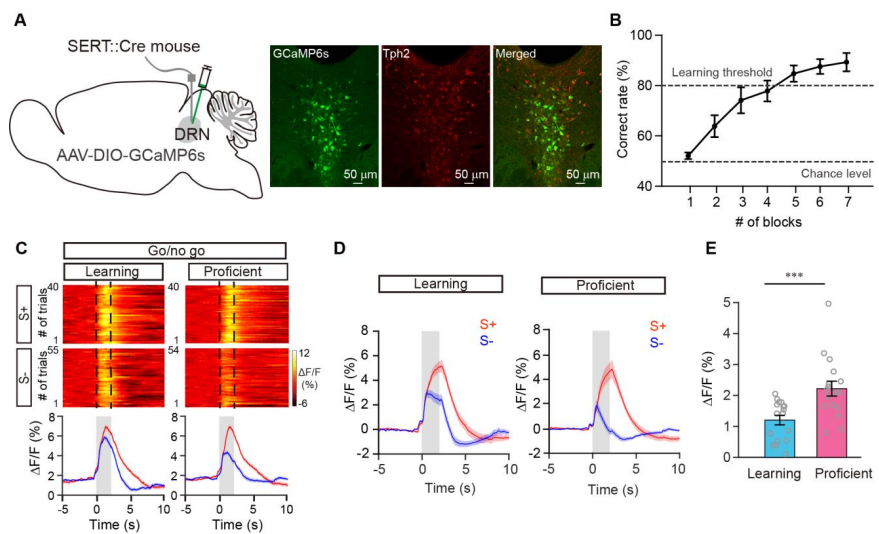AAV-mCherry was used for identification of GABAergic neurons, AAV- GCaMP6s was used for fiber photometry. (All viruses were packaged by
BrainVTA)
The viruses used in this article from BrainVTA are in the table below
|
Control |
PT-0325 AAV-VGAT1-mCherry |
|
Calcium sensors |
PT-0110 AAV-CaMKIIα-GCaMP6s |
Pub Date: 2020-01-28,
DOI: 10.1073/pnas.1913922117,
Email: [email protected]
Dejuan Wang, Xiaojie Wang, Penglai Liu, Siqi Jing, Han Du, Lingzhi Zhang, Fan Jia, and Anan Li
The olfactory system receives extensive serotonergic inputs from the dorsal raphe, a nucleus involved in control of behavior, regulation of mood, and modulation of sensory processing. Although many studies have investigated how serotonin modulates the olfactory bulb, few have focused on the anterior piriform cortex (aPC), a region important for olfactory learning and encoding of odor identity and intensity. Specifically, the mechanism and functional significance of serotonergic modulation of the aPC remain largely unknown. Here we used pharmacologic, optogenetic, and fiber photometry techniques to examine the serotonergic modulation of neural activity in the aPC in vitro and in vivo. We found that serotonin (5-HT) reduces the excitability of pyramidal neurons directly via 5-HT2C receptors, phospholipase C, and calcium-activated potassium (BK) channels. Furthermore, endogenous serotonin attenuates odor-evoked calcium responses in aPC pyramidal neurons. These findings identify the mechanism underlying serotonergic modulation of the aPC and shed light on its potential role.
 Fig1. Serotonergic neurons respond to the odors in a go/no go task.
Fig1. Serotonergic neurons respond to the odors in a go/no go task.
To investigate how 5-HT affects the activity of pyramidal neurons in the aPC, the authors identified the mechanism underlying this action by using pharmacologic manipulations and optogenetic activation of serotonergic inputs in the Apc in vitro. Furthermore, they combined calcium fiber photometry (From
BrainVTA) and optogenetics to investigate how serotonergic inputs modulate the odor-evoked neural responses of pyramidal neurons at the cell population level in awake mice. These findings identify the mechanism underlying serotonergic modulation of the aPC and shed light on its potential role.
BrainVTA offers viral vector construction & virus packaging services for AAV, LV, RABV, PRV, HSV and VSV that help researchers explore questions about genes, neurons, circuitry structure, function of brain network, mechanism and treatment of diseases.
If you have any needs, just email us at
[email protected].
